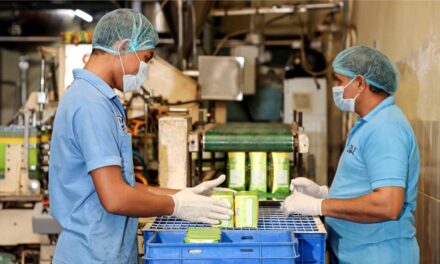Growth in frozen foods in two directions, one in frozen dinners which only need to be heated and consumed and secondly in frozen ingredients large proportion. As more people rely on either ready-to-eat or outside food, frozen foods being extremely convenient is getting ahead, writes Jagadish Pai.
Table of Contents
The global frozen food market is around US$ 300 billion and is expected to grow at about 4% annually. World over, more women are working and have more income, which has given them less time for cooking. They want either ready-to-eat or convenient ingredients. Frozen foods offer both. There are frozen TV dinners as well as excellent frozen meat, fish, poultry, vegetables, etc., which are of high quality and easy to prepare into various dishes, offering both convenience and quality.
Although the largest market for frozen foods is North America, the rise in the frozen food market has been led by Europe in recent years, followed by good increases in the Asia Pacific. India and China are showing remarkable increases. Growth in these areas is due to the tapping of many untapped markets and the changing economic and cultural scenario in these areas. Lifestyles are changing with large urbanisation taking place. People also have more disposable income. They want to spend more time with family and entertainment than with the drudgery of cooking. This has spiked the growth in all processed foods, including frozen foods.
Growth in frozen foods is in two directions, one in frozen dinners, which only need to be heated and consumed and secondly in frozen ingredients, a large proportion of which goes for the foodservice sector, like hotels, restaurants, fast food outlets, caterers and canteens. As more people rely on either ready-to-eat or outside food, frozen foods being extremely convenient is getting ahead.
Frozen Foods: Indian Scenario
The Indian frozen food market was a bit of a late starter, but is catching up rapidly. Earlier, the only frozen food one saw here was ice cream, but now we are seeing all kinds of frozen foods in the Indian market. About two decades ago, with government encouragement, some companies started meat and fish frozen products. There was also an effort to export these products. We not only see fish, meat and vegetables which are cut, trimmed, cleaned and frozen, but also we see frozen pizza, paratha, samosas, french fries, etc. and even such things as complete dinner ready to heat in the microwave and eat.
The global frozen food market was valued at approximately USD 304.48 billion in 2023 and is projected to grow at a compound annual growth rate (CAGR) of 5.9%, reaching around USD 510.06 billion by 2032 (Introspective Market Research). This growth is driven by increasing consumer preference for ready-to-eat food products that require minimal preparation time, a trend supported by the rising number of working women and higher household incomes worldwide.
The global frozen food market was valued at approximately USD 304.48 billion in 2023 and is projected to grow at a compound annual growth rate (CAGR) of 5.9%, reaching around USD 510.06 billion by 2032 (Introspective Market Research). This growth is driven by increasing consumer preference for ready-to-eat food products that require minimal preparation time, a trend supported by the rising number of working women and higher household incomes worldwide.
Frozen foods offer both convenience and quality, with a wide range of products such as TV dinners, frozen meats, fish, poultry, and vegetables that are easy to prepare and of high quality (Grand View Research). This makes them an appealing option for consumers looking for quick and convenient meal solutions without compromising on nutritional value.
















